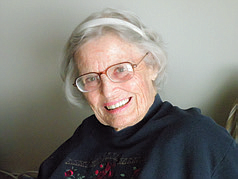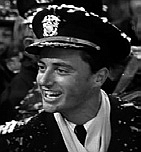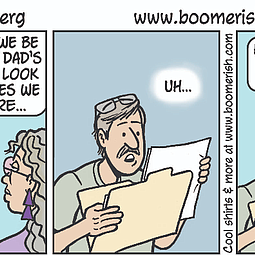It’s Still a Wonderful Life
November 29, 2015 at 1:41 p.m.
Katherine Karns of Ellensburg will politely decline when asked if she’d like to join others to watch the classic Christmas holiday movie from 1946, It’s a Wonderful Life, starring Jimmy Stewart and Donna Reed.
“I don’t talk a lot about my background…I just say nicely, ‘no, thank you, I’ve seen it,’ ” Karns, 94, said recently from her room at Dry Creek Assisted Living Community in Ellensburg, Wash.
Karns’ late husband, actor Todd Karns, had a key part in the movie, playing Stewart’s younger brother, Harry Bailey. Stewart, as George Bailey, saves Harry’s life as a child in the movie. Harry, coming back a hero from World War II, toasts his beleaguered brother, George, at the end of the film: “To my big brother, George. The richest man in town!”
Katherine Karns said her husband’s role didn’t make them rich, but it created lasting memories.
Karns moved from her home near Guadalajara, Mexico, to the Kittitas Valley in early 2013 to live near one of her daughters, Julie Karns of Ellensburg, and son Scott Karns of Roslyn. She said sometimes in her quieter moments, as the Christmas holiday season nears, she often thinks about her life with Todd and the wonderful life they’ve had.
Karns said Todd’s brief role in It’s a Wonderful Life was a fairly good-paying part in 1946, although the movie was only mildly well received at the time. Although the film was nominated for five Academy Awards, including Best Picture, movie historians would say the film was a flop when it first came out. It has since then has been recognized by the American Film Institute as one of the 100 best American films ever made.
“We were a Hollywood married couple, deeply in love, trying to make a go with Todd’s acting career,” Karns said with a laugh. “We were young, hungry actors.”
The couple was surprised many years later that It’s a Wonderful Life took off in popularity beginning in the late 1970s and through the 1980s, primarily through numerous television showings and VCR availability.
It’s now considered one of the nation’s top holiday movies of all time.
“Who would have thought that would happen? At that time we sure didn’t,” she said. They met while both were serving in the U.S. Army Air Force at a base at Hobbs, N.M. She was a corporal in the Women’s Army Corps and Todd was a lieutenant in charge of directing the medical rehabilitation of war-wounded B-17 bomber crews.
Todd, the son of well-know Hollywood character actor Roscoe Karns, caught Katherine’s eye while he was working to put on a camp entertainment show at Hobbs for service personnel. He was “terribly, I mean terribly handsome,” and known as an aspiring actor before the war, she said, having appeared in some of the popular Andy Hardy films starring along with Mickey Rooney.
Before World War II, Katherine also had dreams of acting. She was active in her high school’s drama department in Milwaukee, studied aspects of drama at the University of Minnesota and attended Maria Ouspenskaya acting school in Hollywood.
“And I felt I was fairly good looking and had a good chance in Hollywood, just like about a million other young women,” she said with a smile.
Immediately after war with Japan began on Dec. 7, 1941, there were nightly blackouts along the West Coast, along with fears of air raids and enemy landings. She decided to head home to Milwaukee to what seemed like a safer place. Soon she answered the call for military service and joined the Army. She was trained to fix radios.
Katherine and Todd secretly dated while at Hobbs because officers were not supposed to fraternize with those of lower rank. Their dates took them off base as Todd had access to a vehicle, a 1938 Chevy coupe. Often she’d be in the trunk temporarily as the vehicle went through the gates under the eyes of guards.
On one date with Todd, their car was stopped near the base gate in a lineup of vehicles being searched by MPs. Something had been stolen from the flight line and base searches were underway.
“It was my idea this time that I should get back into the trunk of the car,” Katherine said. “I heard (Todd) talking very fast and very convincingly that the trunk hadn’t been opened in years and the (separate) key wouldn’t work. Boy, he talked fast, fast, fast. He talked his way out of that one. It was a great acting job.”
She later learned he forcefully twisted the key in the trunk’s lock as the MP waited, making sure it wouldn’t open.
She got out after Todd drove onto the base and away from the gate, and the trunk was pried open. She told him she was never going to do that again. Todd later said she’d only have to travel in the trunk past the base gate one more time, in a trip to get married in the nearby town of Artesia, if she’d be his bride.
She said yes and realized marrying would be against regulations, too.
They later got to Artesia on Sunday, Feb. 27, 1944. “We were walking around and came to a Methodist Church before any service started. We talked to the pastor there, and he agreed to marry us that same day,” Katherine said.
Todd rushed off to buy a ring after the pastor called a local jeweler asking that he open his business briefly just for Todd.
The pastor during the church service told the congregation about the couple and that they’d be married soon.
When Todd showed up at the church with the ring, the pastor halted the service and performed the marriage ceremony right then and there with the congregation looking on.
“I was wearing an old pink sweater and had on my olive drab WAC skirt,” Katherine said. “Everyone was so nice; they were just so lovely to us young lovebirds.”
The Army wasn’t so nice about the wedding. She went through a summary court martial for marrying an officer, she said, and for punishment was sent to a military base at Deming, N.M., to work in public relations.
“Whenever we could we would meet each other in a little town that was just about halfway between Hobbs and Deming,” said Katherine. “That was our great, early married life.”
The war ended, Katherine left the WAC and Todd was sent to Los Angeles for a time to be a military recruiter. After leaving the service, the two resettled in Hollywood, worked on Todd’s career and began to raise a family.
It’s a Wonderful Life was his first significant part after the war, and through 1955 he had acting parts in several films and in television series, including one with his father.
During this time Todd exercised his artistic abilities through oil painting and sold several of his artworks; he also worked as a director’s assistant in television productions.
“I decided to write a letter to the Ladies Home Journal about this time,” Katherine said. “I told them, why don’t you do a piece on an actor who isn’t a big star and his family?”
The publication said yes, and the couple was featured in a several-page spread with photos in the September 1950 edition, part of a series titled How America Lives.
Magazine editors found out how beautiful Katherine was and did a separate piece in the edition with her modeling elegant clothing.
“I felt like a queen,” Katherine said with a laugh.
The following years the family grew with three children. Todd worked what Katherine called “a regular job” in public relations for the North American Phillips Corp., becoming West Coast manager after several years.
Her husband and his father had visited Mexico many times before the war, and Todd later decided living in Mexico with his family in a large enclave of U.S. citizens and Canadians would be great.
“Your U.S. money, what little we made, went a long, long way down there,” Katherine said. The Karns family moved to Ajijic, in the state of Jalisco, in 1971.
What followed were “wonderful years” Katherine said: children growing up, and Todd painting and regularly producing shows and plays at a large, English-language community theater they opened after directing its construction. Katherine worked for about 10 years in a fabric weaving business in the Ajijic area, seven years as a real estate agent and 10 years as a columnist and writer for a metropolitan English-language newspaper in Mexico.
She said she was deported while at the weaving business for being a U.S. citizen working in Mexico without a permit (“they handcuffed me and arrested me and took me away and everything”).
She later returned to Mexico through another border crossing after getting a new visa, a process that didn’t alert Mexican officials to her prior deportation.
“We counted on the Mexican government’s inefficiency,” she said.
Sometime in the late 1970s or early 1980s her mother phoned her and said It’s a Wonderful Life was getting all kinds of Christmas time reviews and the acclaim it didn’t get back in 1946.
“That’s when it became a traditional, holiday staple for anyone and everyone to watch again and again,” Katherine said. “It’s still amazing to me that they keep showing the movie year after year after year.”
Todd died in February 2000 at the age of 79 after struggling with cancer. “Life with Todd was an adventure,” Katherine said.
“He was so good looking, that’s how I remember him,” Katherine said wistfully. “I hope he’s wowing them in heaven; I mean, what a good looking guy!”
Reprinted with permission from the Daily Record, Ellensburg, Washington







